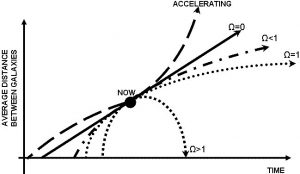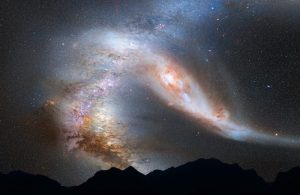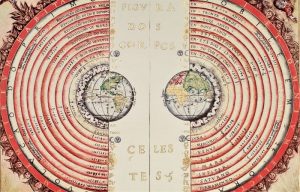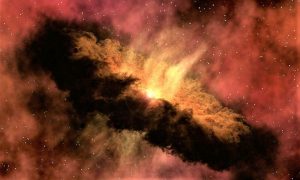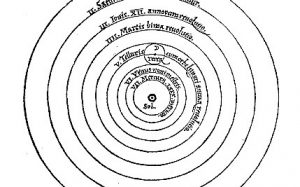Dark matter
Approximately 80 percent of the universe's mass is composed of material that scientists cannot observe directly and even of which, they have no absolute knowledge. Dark matter is the strange parts of the universe that do not emit light or energy. Scientists believe that dark matter dominates the universe because studies of other galaxies in the 1950s indicated that the universe contained more matter than could be observed by simple sight. Scientists believe that there is something we cannot see that is working. They believe that there is something we have yet to detect directly in galaxies, an extra mass, which can generate extra gravity that they need to stay intact. This is called dark matter.

Related topics
Dark energy, string theory, stationary theory, inflationary theory, oscillating universe theory
What is dark matter?
Dark matter is a term used in astrophysics and physical cosmology to define the type of matter and energy in the universe, which does not correspond to dark energy, ordinary matter or neutrinos, as it does not emit or interact with any type of electromagnetic radiation.
Backgrounds
Dark matter has its origins in the year 1600. Sometime after Isaac Newton presented his Universal Gravity Theory, some astronomers began to speculate about the existence of objects that could emit little or no light in the universe, but that could still be known for their gravitational force exerted on bright objects such as stars and planets. This idea gained strength in the 1700s after scientist Pierre Laplace argued that some objects might be massive enough to catch any light emitted, and in the 19th century, Urbain Le Verrier and John Couch Adams used gravitational anomalies in Uranus’ motion to predict the presence of Neptune.
At this time, astronomers had succeeded in demonstrating the presence of dark nebulae, seen only by the light they absorb from the bright objects behind them. It was clear that there was more to the Universe than could be seen by the naked eye. Today, dark matter has been seen as the main contributor to the formation of galactic mass by Fritz Zwicky who in 193,3 made a study of the motion of galaxies within the Coma Cluster, a galactic supercluster containing more than 1,000 galaxies.
A few years earlier, Edwin Hubble had estimated that the Coma Cluster contained approximately 800 galaxies, each with approximately one billion stars. Using the Virial Theorem, Zwicky calculated a mass more than 500 times greater than Hubble. Zwicky pointed out that, if his measurements were true, dark matter would be present in a much larger amount than luminous matter.
Dark Matter history
The first references that exist about dark matter only hint at a modern understanding. Towards the end of the 19th century, new images in astronomical photography field revealed dark regions in the sky. Stars did not appear to be evenly distributed, and scientists wondered whether this was because dark regions lacked stars, or whether some absorbent matter was blocking their view of other stars.
Lord Kelvin, a Scottish-Irish physicist, was one of the first scientists to attempt to estimate the number of dark bodies in the Milky Way galaxy by estimates drawn from the observed star velocity dispersion. Henri Poincaré, a French mathematician and physicist, responded to Lord Kelvin’s ideas by using the term “dark matter“. He was impressed by Lord Kelvin’s ideas but did not agree with the scientist’s conclusions. Poincaré wrote that “since their number is comparable to that offered by the telescope, then there is no dark matter, or at least not as much as bright matter.
Discoverer
The term dark matter was proposed by the scientist Fritz Zwicky in 1933 in response to some evidence found regarding a mass that was not visible and that could influence the orbit velocities of galaxies located in clusters.
What is dark matter used for?
According to a series of analyses and studies it has been discovered that dark matter plays a very important role in the formation of different structures and in the evolution of galaxies. It has some measurable effects on the anisotropy of microwave background radiation.
Composition
This is a subject that is still unknown for sure, but studies indicate that it could include ordinary and heavy neutrinos, elementary particles and axons, astronomical bodies such as dwarf stars, planets and clouds of non-luminous gases. Current evidence favors models in which the primary component of dark matter is the new elementary particles called non-baryonic dark matter.
Importance
It is believed that the importance of dark matter to the universe is based on the existence of a cosmological constant and a dark energy. According to measurements made by the WMAP satellite, the expansion of the Universe is accelerating, and will continue to accelerate due to the existence of dark energy, although without causing a Big Rip.
How to cite this article?
Briceño V., Gabriela. (2019). Dark matter. Recovered on 4 January, 2025, de Euston96: https://www.euston96.com/en/dark-matter/



